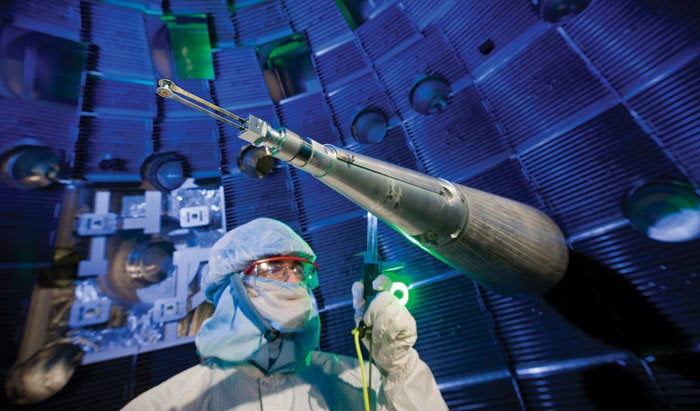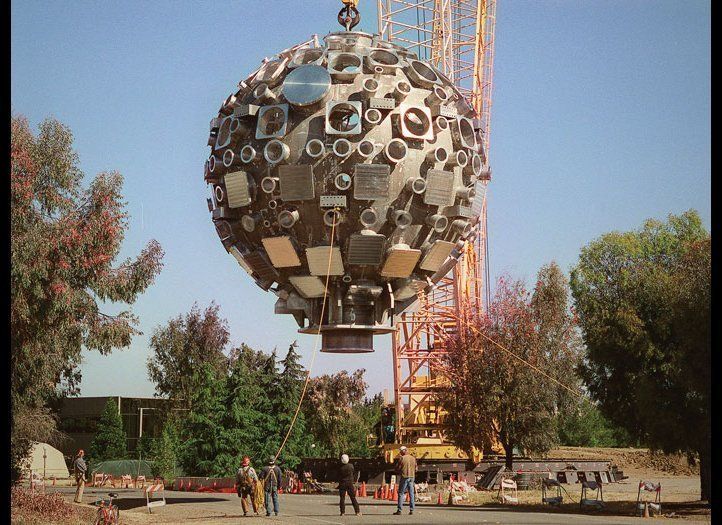
We've just come one step closer to a fully-operational Death Star.
Scientists at the National Ignition Facility (NIF) at Lawrence Livermore National Laboratory in California have fired the most powerful laser shot in the history of the world, setting the record with 1.875 MJ of energy. The historic March 15 firing was just 23 billionths of a second long, but generated 411 trillion watts of peak power.
That's 1,000 times more than the entire United States uses at any given instant, according to a media release from the laboratory.
But the record power didn't stop at 1.875 MJ. According to the lab's media release, the energy produced by NIF actually hit 2.03 MJ before reaching the final chamber, making the ultraviolet laser the world's first to achieve 2 MJ of energy and 100 times more powerful than any similar laser currently in operation.
“It’s a remarkable demonstration of the laser from the standpoint of its energy, its precision, its power, and its availability,” NIF Director Ed Moses told Nature.
The shot not only surpassed the world record, but beat the lab's expectations.
According to Nature, the test chamber was only designed for a 1.8 MJ output. Despite the high output, the experiment also did less damage to the laser optics system than expected, allowing the team to perform a second firing just 36 hours later.
The incredible power generated is working towards more than simply the greatest laser pointer of all time, but it isn't intended for military purposes either. Sorry, Star Wars fans. Instead, the NIF is attempting to ignite a fusion reaction, which would be a first for mankind.
In this round of testing, the laser wasn't aimed at a specific target -- which would be required in any attempt to create a fusion reaction -- though that is the eventual goal.
Prior to this test, the NIF was only able to create aproximately 1.6 MJ of energy, though now that they've surpassed their goal of 1.8 MJ, the process for achieving fusion may be reevaluated.
Moses declined to say when he will test the 1.875-megajoule capability on a target, but he says that the extra energy will allow more leeway in target designs.
Of course, the paving the way toward fusion isn't the only scientific use for lasers these days, and different experiments could mean the NIF's record won't last long.
According to the Telegraph, the Extreme Light Infrastructure Ultra-High Field Facility, the construction location of which is still being bid on by a number of European countries, aims to create a laser with enough power to "rip the fabric of space" and discover the inner workings of the universe.
